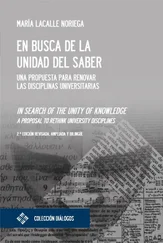As Sudoplatov wrote in his memoirs, the whole Soviet system was based on information received from the security service:
Security offices and administrative agencies provide the leadership with a monthly report on developments in the country. This report includes a summary of internal difficulties and failures of performance at various institutions and enterprises, based on informers’ reports. Under Stalin’s rule it was almost impossible to meet an informer during the daytime; we met our sources almost every evening. 278
Of course, everyone in the Soviet Union knew that someone among his or her friends and colleagues was a secret informer (if he or she was not an informer him- or herself). Even now I still have an unpleasant feeling about my close friends in Moscow who might have been informers. I also witnessed a more open form of connection between informers and the KGB “friends” (this was the name used for KGB personal supervisors of informers).
It was at the end of 1984. I went to the KGB Reception Room (the corner of the Furkasov Lane and Malaya Lubyanka in downtown Moscow) because of my problems with the KGB. After I opened the first door, I saw a huge mailbox to my left. Here any Soviet citizen could deposit an anonymous letter to the KGB, supposedly without being noticed. But that was not so: There was a TV camera pointed at the entrance door. The second door led into a big hall, the right part of which was full of small open booths with telephones. I watched several people sneaking into the booths. I heard the high voice of a woman in the nearest booth. She was complaining about her colleague at work who had been allowed to go for a trip abroad. The woman said that the colleague should not go for the trip because she was a speculator and an anti-Soviet element.
I knew exactly what would happen to that unfortunate woman the informer was reporting on. This was still in the time when every trip abroad by a Soviet citizen was approved or disapproved by both the Party and KGB officials. I received such disapproval in 1975. The director of the institute where I worked at the time gathered at his office members of the Soviet delegation to a scientific international conference in Yugoslavia. I was important to the delegation because I spoke English, and the others did not. We had already gone through all necessary Party and other commissions, which had checked us for loyalty, and we had tickets for the trip in our hands. During the meeting, suddenly a phone rang on the director’s desk. The director picked up the receiver and listened without saying a word. His face became pale. He put the receiver down and told me: “The organs (i.e., KGB) are against your trip.”
In the KGB hall, there was a small flight of stairs in front of me leading to the next floor. A short sergeant in KGB uniform, who stood near the stairway, was staring at me suspiciously. He asked me to show him my passport. After he had inspected my passport, he told me that the Reception Room was upstairs. I followed his instructions, went upstairs, and joined a line of approximately ten men and women; men predominated.
I will never forget these people. Most of them were silent and looked very tense. One man, definitely a native of Uzbekistan in a traditional Uzbek hat, loudly boasted how he would hand over the anti-Soviet “saboteur” fellows from his kolkhoz in Central Asia to the KGB. Some men were trembling. I had never before seen adults shivering from fear. While waiting in the line, one more detail struck me. A group of twelve- to fourteen-year-old kids led by two KGB officers walked in front of our line. Each of them held a notebook. They definitely felt very comfortable in this notorious building. They were “young followers of Felix Dzerzhinsky” and the future KGB recruits.
When my turn came, I was ordered to enter a room with several file cabinets. A big muscled woman in plainclothes asked for my name and then for some time searched the files. After she found what she was looking for, she asked me what I wanted. I told her my story: Because of KGB intervention, I had lost my job at the Academy of Sciences and could not find another one. I had sent a letter to the KGB chairman, Viktor Chebrikov, in which I had asked about the reasons for the KGB actions against me. I had never received an answer, which was a violation of Soviet rules: Officials were obligated to answer the inquiries from citizens within one or two months. She sent me to another room, where a guy who looked like a professional wrestler was waiting for me. He went through the documents in the file the woman had provided him with and said that the KGB had nothing to do with my problems and that I should immediately leave their headquarters. So I did, looking for the last time at people coming into the big hall with telephones on the first floor. The KGB (now FSB) Reception Room is still open all hours of the day and night.
The system worked well, especially with persons who volunteered for cooperation with the secret service. In September 1945, a physicist from Moscow University, Yakov Terletsky, was appointed as a secret scientific adviser (evidently, a special informer) to Sudoplatov’s Department “S” of the NKGB (in charge of intelligence materials on A-bomb development by the American and British teams). 279Department S was established within the NKVD on September 27, 1945, with the goal of “obtaining and analyzing the intelligence on the creation of the A-bomb.” 280Sudoplatov was appointed head of this department, and Eitingon and General Nikolai Sazykin became his deputies. On January 10, 1946, Department S was reassigned under the NKGB/MGB. Terletsky was the NKVD/MGB’s point person to contact the famous physicist Niels Bohr in Denmark in 1946 concerning the A-bomb project. 281Terletsky’s mission was under personal control of Stalin. 282In 1990, Terletsky wrote in his memoirs:
Although I myself happened to be connected with the secret intelligence service, I was absolutely shocked when I heard that Niels Bohr could be named an agent of the [British] Intelligence Service. For us, the Soviet people, it was a natural duty to our Motherland (but for many individuals a very unpleasant one) to help the Soviet secret organs. But the “Intelligent Service”! Always, even when the English were our allies, it seemed to have been an organization guarding interests of the bourgeoisie, which is our class enemy. 283
Terletsky’s notes show that even professors of the leading Soviet University in Moscow had been heavily brainwashed by the Soviet ideology propaganda machine. It comes as no surprise that Academician Sakharov mentioned Terletsky as “a theoretical physicist and self-appointed champion of ideological purity… Terletsky apparently envied Lysenko’s laurels, as did many at the time.” 284
There was additionally a very strong psychological motivation for a scientist to collaborate with the NKVD/KGB: secret power and, as we will see in the Vavilov case in the next chapter, the opportunity to destroy a hated scientific opponent through nonscientific methods.
It has become even easier now to inform the FSB. According to deputy head of the FSB Counterintelligence Department Nikolai Volobuev, in 2001 the FSB has set up a special phone line for scientists who are in contact with foreign colleagues and suspect them to be spies. 285In April 2001, the Russian Supreme Court supported the FSB regulation to use anonymous denunciations from citizens for investigation. 286Since 1988, this practice has been officially banned in the Soviet Union.
Almost all German scientists eagerly accepted offers to become the successors of their Jewish colleagues who had been fired. The simple acceptance of such offers in the name of science made them loyal to the regime.
Читать дальше











